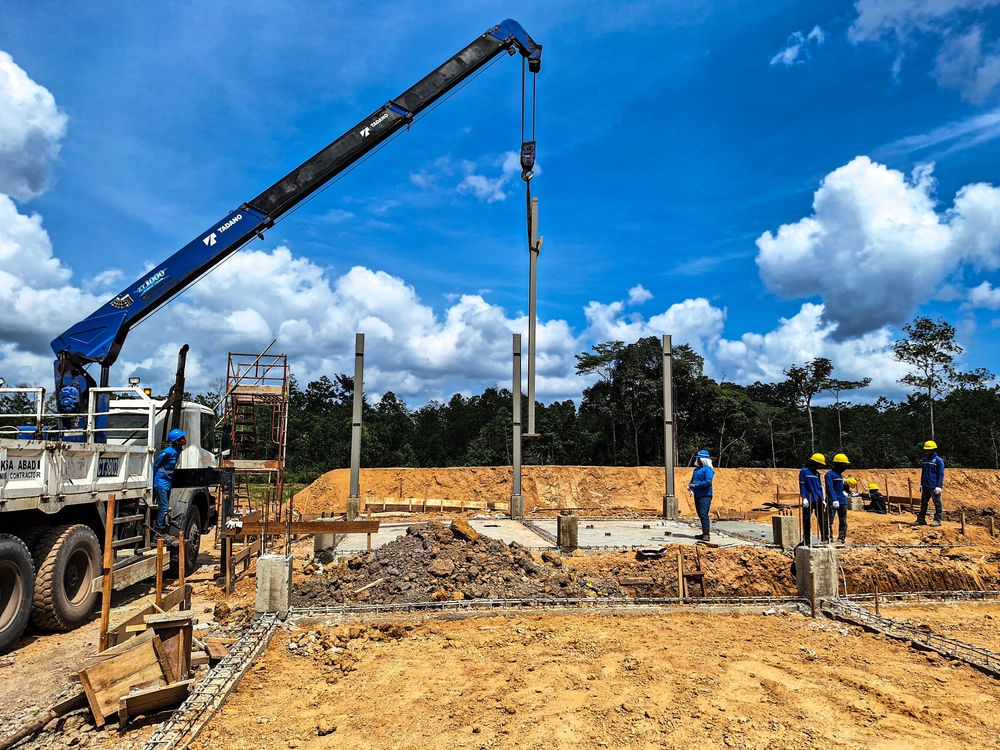

Commercial construction projects are complex endeavors that involve numerous stakeholders, intricate timelines, and substantial financial investments. From initial planning to project completion, various challenges can arise, potentially impacting the project’s success. Addressing these challenges requires foresight, effective communication, and proactive management strategies. In this blog, we’ll explore some of the most common challenges encountered in commercial construction projects and discuss practical approaches to navigate them successfully.
Understanding the Landscape of Challenges
Before delving into specific challenges, it’s crucial to grasp the overarching landscape in commercial construction projects. These projects often involve:
- Multiple Stakeholders: Including developers, architects, engineers, contractors, subcontractors, suppliers, and regulatory authorities.
- Stringent Regulations: Compliance with building codes, zoning laws, environmental regulations, and safety standards.
- Budgetary Constraints: Cost overruns can significantly impact profitability and project viability.
- Time Sensitivity: Delays can lead to financial penalties, missed opportunities, and strained relationships.
- Technological Integration: Adopting new technologies and managing digital tools can present both opportunities and challenges.
With this context in mind, let’s explore specific challenges and effective strategies for managing them.
1. Design and Planning Challenges
Scope Creep and Design Changes
Challenge: Scope creep and frequent design changes can disrupt timelines and inflate costs.
Strategy: Establish a robust initial design phase with clear scope definitions and regular stakeholder consultations. Implement change management protocols to assess the impact of design changes on budget and schedule.
Coordination Among Stakeholders
Challenge: Coordinating between architects, engineers, and contractors to ensure design intent aligns with practical construction requirements.
Strategy: Foster open communication channels, utilize Building Information Modeling (BIM) for collaborative design, and conduct regular coordination meetings to resolve conflicts and ensure alignment.
2. Budget and Cost Management
Cost Estimation Accuracy
Challenge: Inaccurate cost estimations leading to budget overruns or underestimations.
Strategy: Employ experienced estimators, leverage historical data and industry benchmarks, and conduct thorough risk assessments to account for unforeseen costs.
Value Engineering
Challenge: Balancing cost efficiency with design integrity and functionality.
Strategy: Engage in value engineering workshops early in the project to identify cost-saving opportunities without compromising quality. Prioritize elements that provide the most value to stakeholders.
3. Schedule and Timeline Challenges
Delays and Unforeseen Conditions
Challenge: Delays due to weather, unforeseen site conditions, or supply chain disruptions.
Strategy: Develop a realistic project schedule with contingency plans. Regularly monitor progress, anticipate potential delays, and proactively address issues to minimize their impact.
Permitting and Regulatory Approvals
Challenge: Delays in obtaining necessary permits and approvals can halt progress.
Strategy: Begin the permitting process early, maintain open communication with regulatory authorities, and engage consultants familiar with local regulations to expedite approvals.
4. Risk Management
Contractual Risks
Challenge: Ambiguities or discrepancies in contracts leading to disputes.
Strategy: Ensure contracts are clear, comprehensive, and reviewed by legal experts. Define roles, responsibilities, and dispute resolution mechanisms upfront to mitigate risks.
Safety and Security
Challenge: Ensuring a safe working environment and securing the construction site from theft or vandalism.
Strategy: Implement stringent safety protocols, provide ongoing training to workers, and employ security measures such as surveillance and access control.
5. Quality Control and Assurance
Material and Workmanship Standards
Challenge: Maintaining consistent quality across materials and workmanship.
Strategy: Establish quality control processes, conduct regular inspections, and enforce adherence to specifications and standards. Utilize technology such as drones and sensors for enhanced monitoring.
Commissioning and Handover
Challenge: Smooth transition from construction to operational phase.
Strategy: Develop a commissioning plan early, involve end-users in acceptance testing, and provide comprehensive training to facility managers. Ensure documentation and warranties are in place for future maintenance.
6. Technology Integration
Adoption of New Technologies
Challenge: Integrating new construction technologies into existing workflows.
Strategy: Invest in training programs for staff, pilot new technologies on smaller projects, and gradually scale implementation based on feedback and performance metrics.
Data Management and Collaboration Tools
Challenge: Managing large volumes of project data and ensuring seamless collaboration.
Strategy: Implement cloud-based project management platforms, utilize mobile apps for real-time updates, and establish protocols for data sharing and version control.
Conclusion
Successfully navigating the challenges in commercial construction projects requires a holistic approach that encompasses effective planning, proactive risk management, and robust communication among stakeholders. By addressing design and planning challenges early, managing budget and cost effectively, adhering to realistic schedules, mitigating risks, ensuring quality control, and embracing technological advancements, project teams can enhance project outcomes and deliver successful commercial constructions that meet stakeholder expectations.
